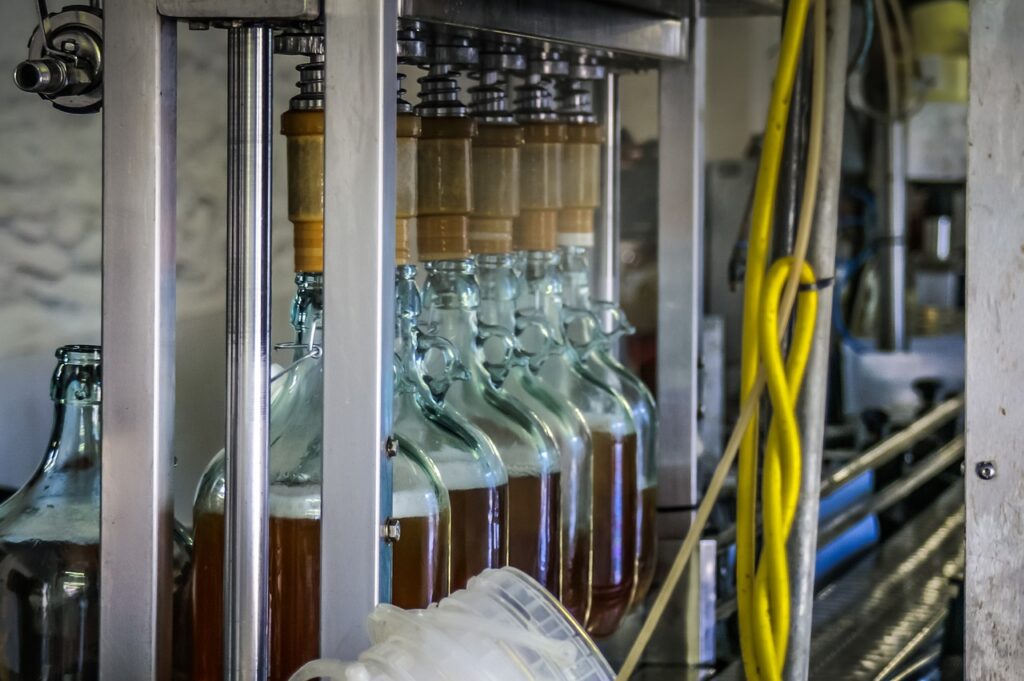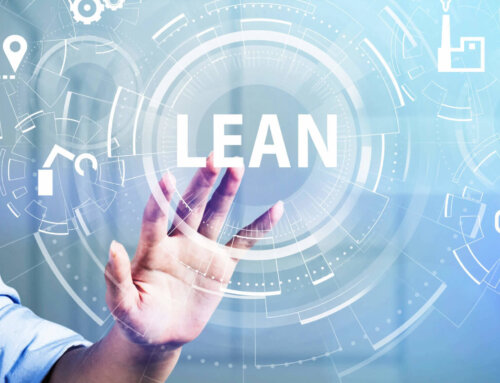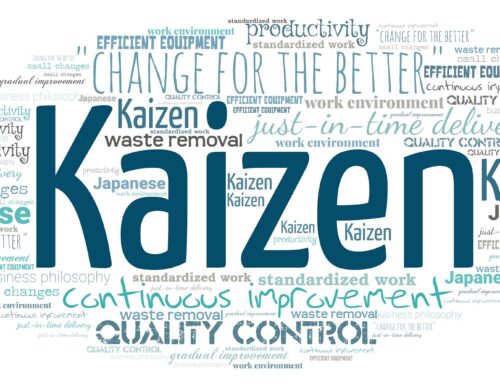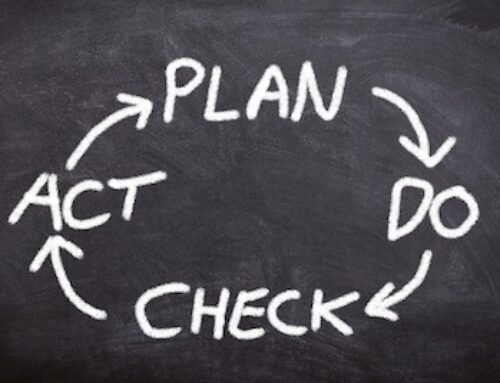There’s an old saying, “If you’re not getting better, you’re getting worse”. While simple, that common saying perfectly encapsulates the philosophy of Kaizen.
Kaizen is a Japanese philosophy built around the idea of striving for continuous improvement in operations through small incremental changes over time. And one of the best ways for implementing Kaizen in your organization is through Kaizen events.
In today’s blog, we’ll take an in-depth look at what it takes to conduct a successful Kaizen event, and leave you with tips for successful Kaizen event planning and implementation.

Kaizen – Continuous Improvement Basics
Before we dive headfirst into successful Kaizen event implementation, let’s first see why Kaizen has been such a driving force of change in the manufacturing world.
Imagine a facility where every step of the manufacturing process has been optimized – where nothing is wasted, and all operations are streamlined to maximize efficiency. With Kaizen and continuous improvement, that is not just a dream, but an achievable reality.
Kaizen works by standardizing and documenting daily operating procedures, so that they can be evaluated for improvement opportunities. Continuous improvement Kaizen strategies take advantage of the entire workforce to comb their everyday procedures for areas that can be improved. In Kaizen, it is considered everyone’s responsibility to contribute improvement ideas, creating a culture of continuous improvement in an organization.
Kaizen is often enacted through a process called PDCA – Plan, Do, Check, Act. This formula helps an organization to:
- Plan – Identify an opportunity for change, and formulate a plan to achieve it.
- Do – Test the proposed change on a small scale.
- Check – Review the results of the change and its effectiveness.
- Act – If the change was successful, it can be implemented on a wider scale. If it was unsuccessful, you can repeat the cycle with a new plan.
Kaizen then is a simple and straightforward concept that ultimately uses small incremental changes over time to make products and processes the best they can be. Through Kaizen, continuous improvement manifests in areas such as reduced product defects, less waiting time and idle machinery, and a reduction in excess inventory.
What is a Kaizen Event?
So now that we understand what Kaizen is, how is this actually implemented in an organization?
We talked about how Kaizen can create a culture of continuous improvement – that it is everyone’s responsibility to speak up and identify areas of improvement when and where they see them. This kind of day-to-day approach is called daily Kaizen.
But sometimes, a more focused approach can yield significant results. This is known as a Kaizen event.
A Kaizen event, also known as a Kaizen blitz, is a focused workshop-like event where a designated Kaizen facilitator works together with a team of representatives from all levels of the organization to identify areas of improvement. Kaizen events can last for several days, up to a full week, and look to address a specific area or achieve a specific goal.
Whether a Kaizen event is focused on solving a specific problem, or held regularly throughout the year, the key is harnessing the collective power of the team to produce better results for the organization. Kaizen events encourage collaboration and communication, and promote ownership of work to all members of the team.
Next, let’s look at what it takes to successfully run a Kaizen event.
How to Successfully Run a Kaizen Event
Running a successful Kaizen event can be broken down into two phases – Kaizen event planning and Kaizen event implementation.
Kaizen Event Planning
Often, a dedicated Kaizen facilitator (such as Manex) is brought in to conduct the event. Your organization may already have someone familiar with Kaizen onboard who can help lead the event, but bringing in an experienced Kaizen trained facilitator can make a world of difference.
No matter who is leading the event, Kaizen event planning can be broken down into several steps.
- The first priority is identifying a target or goal for the Kaizen event. This can be something like reducing waste in materials, machine downtime, or energy consumption.
- Whatever your focus is, you will need to identify the associated processes that will be examined during the event.
- Next, you will need to identify the key stake holders that will be assembled for your Kaizen event team. This should include a diverse range of people, from frontline workers to supervisors, managers, and anyone else with an inside knowledge of the processes you will be evaluating.
- Lastly, a successful Kaizen event should have a specific target or goal in mind. This will help you gauge the effectiveness of the sprint.
To help ensure you’re fully prepared before beginning a Kaizen event, your assembled team should ask itself a few questions such as:
- What is the problem we are trying to solve?
- Where in the overall process does the problem occur?
- Who does the problem affect?
- Is this a recurring problem?
- Is this an urgent problem for the business?
Lastly, Kaizen event planning should not discount the importance of customer feedback. One of the primary goals of Kaizen and continuous improvement is creating a better product and experience for the customer. Gathering customer input and feedback through surveys and other methods is an ideal way to uncover issues that can be resolved during a Kaizen event.
Kaizen Event Implementation
Once a strong foundation has been laid through Kaizen event planning, it’s time to move onto Kaizen event implementation.
Most Kaizen events are designed to run for five days, so we’ll break down what a typical five day Kaizen event looks like.
Day 1
Day one is all about preparation. Maybe you’ve done some of this work in the preparation phase, but with the team assembled, it’s time to brief them. You must clearly define the Kaizen event’s goals and objectives. This is also the right time to map out the process you are trying to improve. Assess the process flow, identify any bottlenecks or known issues, and gather data to use as a baseline.
Day 2
On day two, brainstorming solutions begins. Present data on the current operation, and consider what is causing the waste or inefficiencies. Be sure to solicit the input of all event team members on how these problems can be solved, and work towards a consensus. Document what will be needed to implement the proposed solution.
Day 3
On day three, the improvement plan is implemented on a small scale. Data is collected on the improvements.
Day 4
Day four is used to measure the results of the improvements against the base line data. Adjustments can be made to optimize the improvements. If the changes were successful, they should be standardized and documented. If unsuccessful, the cycle begins again and another solution is tried.
Day 5
If the changes were successful, they can be implemented at full scale and employees can be trained on the new procedures. Remember to document the new procedures and most importantly, acknowledge and reward the contributions of each team member throughout the process. Recognition and reward is a key part of growing a culture of continuous improvement in your workplace.
Conclusion
Remember, Kaizen and Kaizen events are not a one-and-done philosophy. It’s all about continuously seeking ways to improve processes, whether it is through daily Kaizen or focused Kaizen events.
Both Kaizen and continuous improvement requires a near constant revaluation of your manufacturing practices. Even after a Kaizen event, you’ll still find inefficiencies and waste. That is okay and to be expected. Remember, continuous improvement and Kaizen is all about making small changes over time to create significant impact. Kaizen events can be run several times per year, or when a problem pops up that needs urgent attention.
Interested in conducting a Kaizen event? Manex is Northern California’s most recommended manufacturing consultant. In our 29 year history, Manex has helped thousands of manufacturers optimize their workflows through Kaizen event planning and implementation.
Don’t waste another moment in your company’s journey towards Kaizen and continuous improvement. Contact Manex today for a FREE consultation, and let us show you how we can help your organization improve its efficiency and productivity through Kaizen events.


